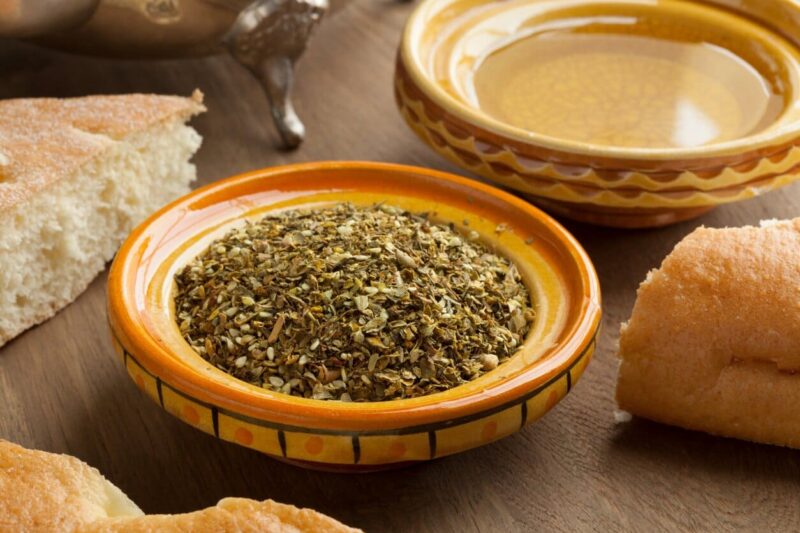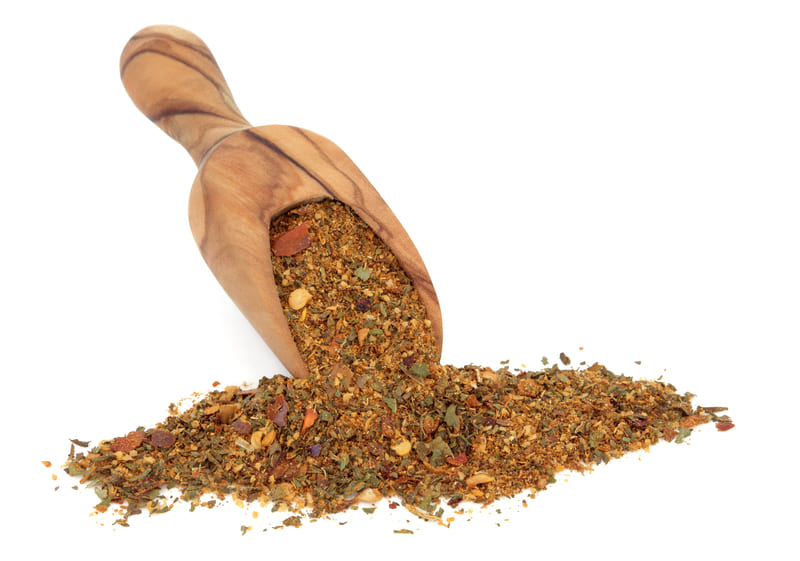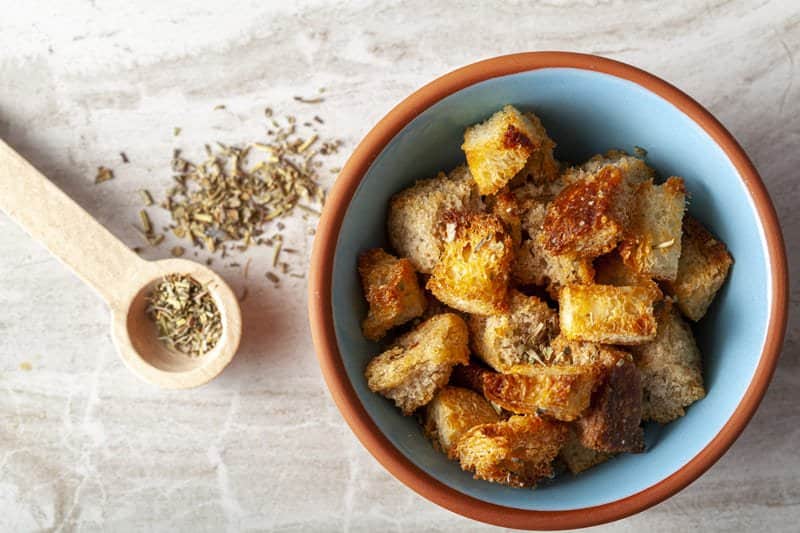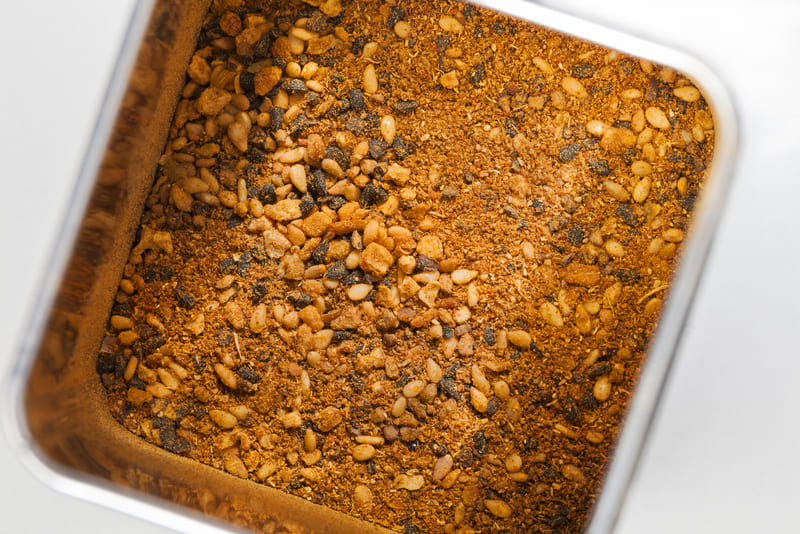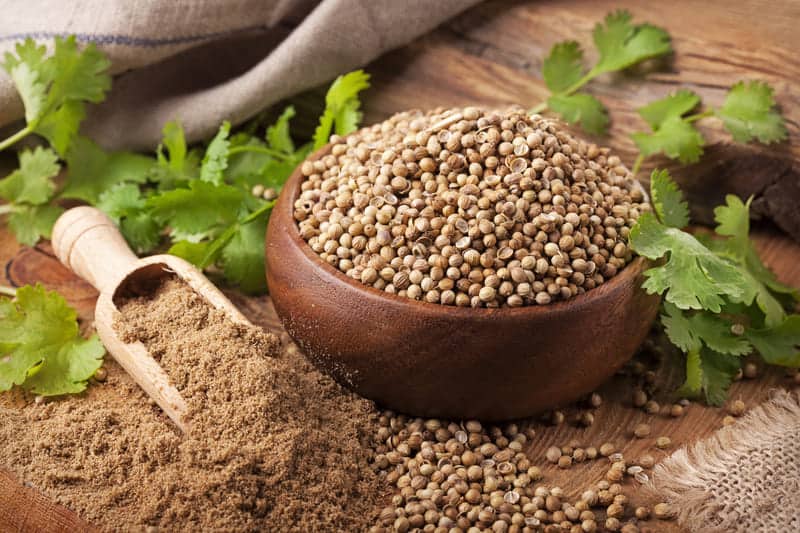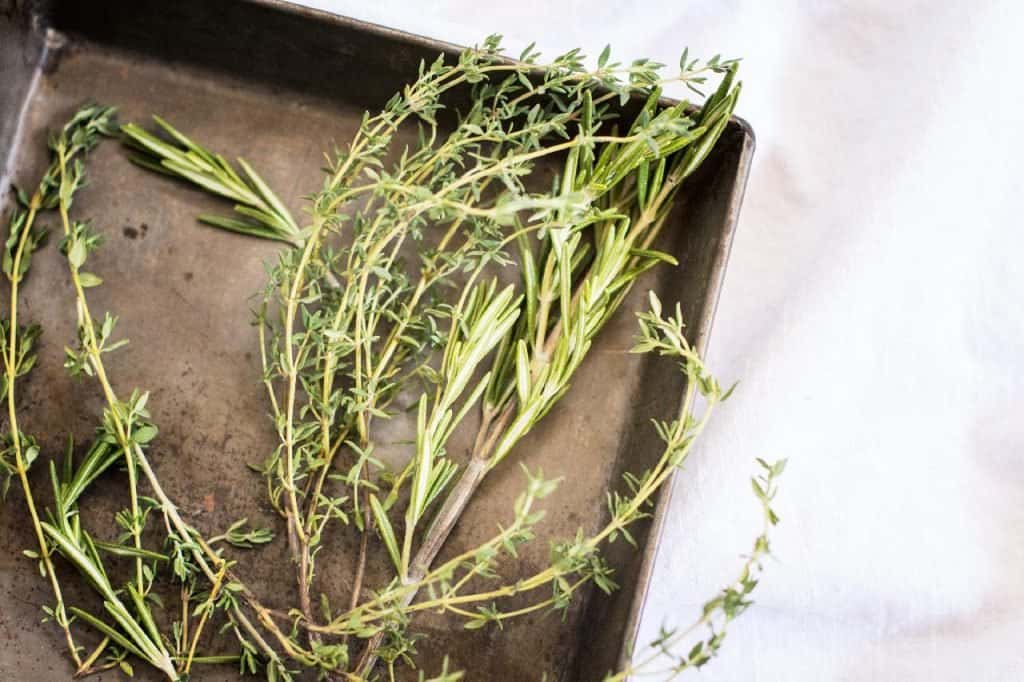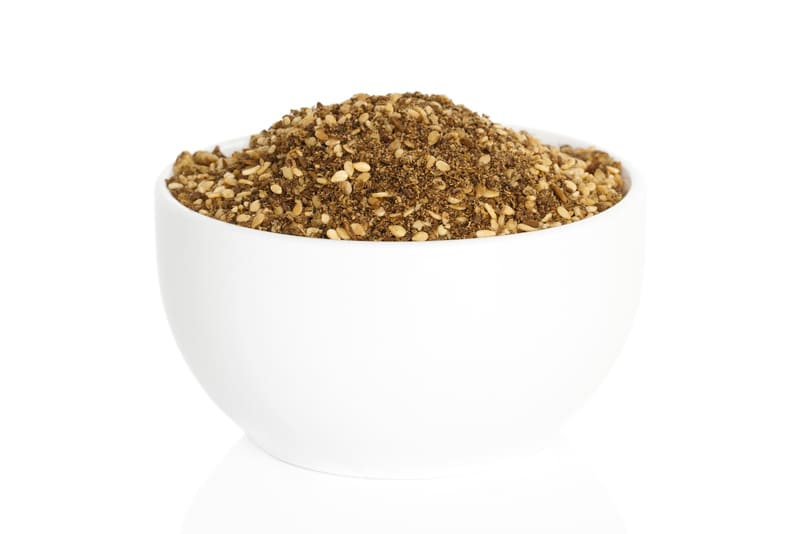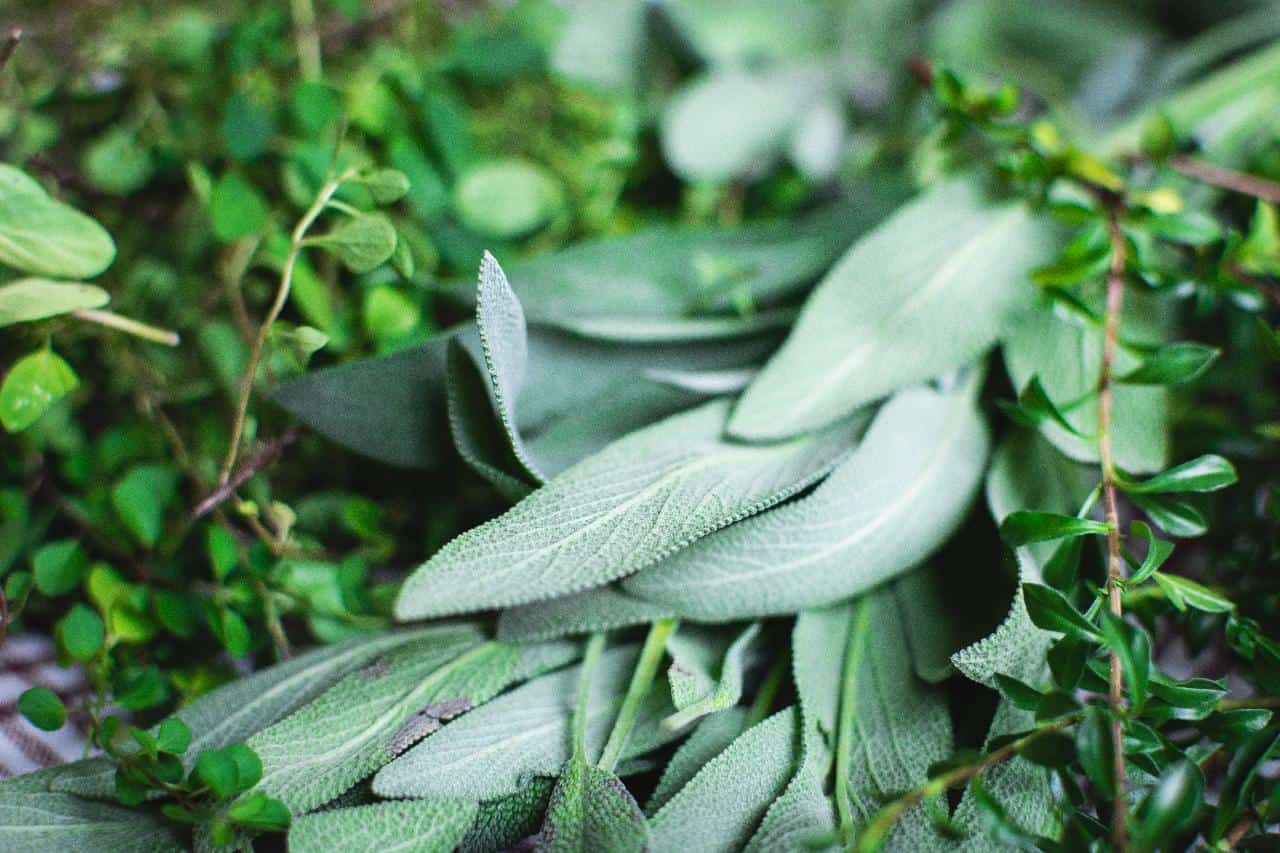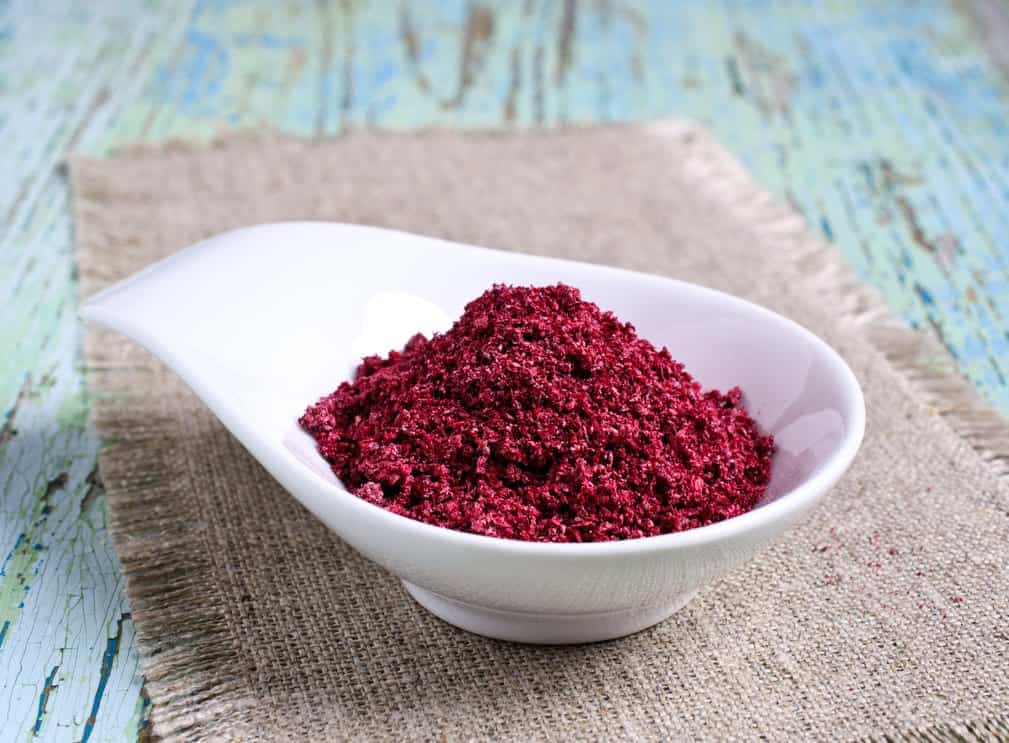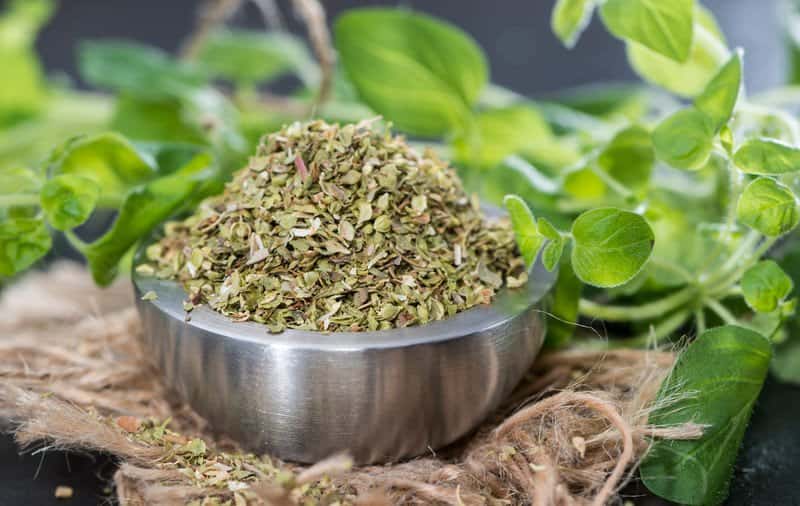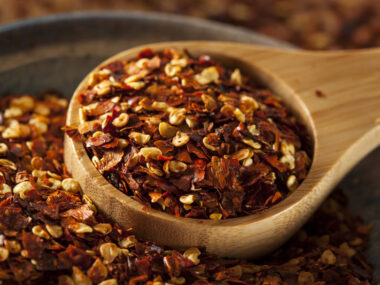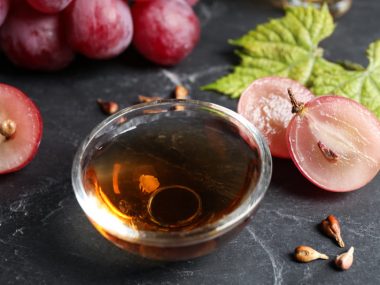Zaatar is a common spice mixture used in Middle Eastern cuisines.
Traditional zaatar was made with a zaatar herb also known as hyssop or Syrian oregano, which is a protected species, hard to find, and costly. Thus, zaatar seasoning is made with other herbs like dried thyme or oregano trying to mimic the flavor of the original zaatar.
Many regional variations of zaatar exist but usually, this flavorful spice mixture is a combination of sumac, thyme, oregano, marjoram, toasted sesame seeds, and salt.
In Middle Eastern and Mediterranean cuisines zaatar is used in different savory dishes to enhance their flavor. It is used in dips, soups, vegetables, meats, seafood, marinades, rice, salad dressings, pasta, or simply sprinkled on bread.
Zaatar is a mixture of different flavors, aromas, and textures all combined in one great-tasting seasoning. If you have ever tried zaatar you will always use it to enhance the flavor of your food. However, if for some reason you can’t use zaatar, you can use some of the following substitutes.
Best Zaatar Substitutes
Zaatar has a unique flavor that is rich, tangy, herbal, nutty, savory, and slightly sour. It is hard to get the same zaatar flavor if you use other herbs as a substitute for zaatar.
There is no right substitute for zaatar, but some of these substitutes have a more similar flavor to zaatar than the others.
1. Harissa Spice Powder
Harrisa spice powder is made from caraway seeds, coriander seeds, cumin seeds, dried oregano, dried parsley, garlic powder, smoked paprika, smoked chili peppers, and salt.
It has a spicy, smoky, garlicky flavor which is different than za’atar’s flavor. However, you can use it to improve the flavor of your dishes. This powder is used as a dry rub for meats and fish, but it is also added to soups, stews, salad dressing, veggies, marinades, and dips.
You can make a paste with harissa spice powder if you mixed it with some olive oil. If you prefer spicy food, you can use harissa spice powder as a substitute for zaatar in your recipes.
2. Italian Seasoning
Italian seasoning is made of dried oregano, dried thyme, dried rosemary, dried basil, and dried marjoram. There are also variations of this seasoning with added fennel seeds, dried sage, crushed red pepper flakes, and garlic powder.
Italian seasoning has an earthy, savory, slightly sweet, and peppery flavor. It works well in salad dressings, meat marinades, pasta sauces, soups, grilled vegetables, and pizza. This seasoning has a similar flavor to zaatar, so you can use it as its substitute.
3. Shichimi Togarashi
Shichimi togarashi is a Japanese spice mix of 7 spices including ground red chili peppers, sansho pepper, orange zest, black or white sesame seeds, ground ginger, hemp seeds, or poppy seeds, and seaweed.
This versatile mix works well in soups, salad dressings, meat and seafood marinades, vegetables, stir-fries, noodles, and many other dishes. It has a spicy, nutty, and citrusy-umami flavor. You can use it as a substitute for zaatar if you like your food to be spicy.
4. Ground Coriander
Coriander same as cumin, fennel seed, and savory is one of the spices used in some varieties of zaatar. It is a spice with an earthy, citrusy, floral flavor that pairs well with cumin, cloves, fennel, nutmeg, and many other spices.
You can add ground coriander in curry, marinades, stews, soups, meat, and veggie dishes. However, you can also use it in various spice blends. You can use ground coriander and toasted sesame seeds as a substitute for zaatar to get a similar flavor in your dish.
Mix equal amounts of ground coriander and toasted sesame seeds add some salt and use in your favorite dishes like you would zaatar.
5. Thyme
You can use this herb to season different types of dishes like roasted meats, fish, veggies, soups, marinades, stews, and stocks. You can also use it in spice blends alongside other herbs like sage, rosemary, and marjoram.
The most used types of thyme in cooking include ordinary thyme and lemon thyme. The regular thyme has an earthy, minty, and floral flavor, while the lemon one has all of these plus a distinctive citrusy flavor.
Thyme is one of the ingredients of zaatar and makes a good substitute for zaatar because it will give a similar flavor to your dishes.
6. Dukkah
Dukkah is an Egyptian spice mixture that usually consists of hazelnuts, coriander, sesame seeds, cumin, black pepper, and salt.
You can also find variations of dukkah made from mint, thyme, marjoram, pumpkin seeds, pine nuts, or sunflower seeds used instead of hazelnuts. Dukkah is usually used as a crust for chicken, lamb, or fish, but it is also sprinkled on vegetables, and used as a dip.
Dukkah has a warm, nutty, citrusy flavor and makes a good substitute for zaatar. You can use dukkah in salads, vegetables, and soups, or use it as a crust for fish, meat, and poultry.
7. Mixed Herbs
If you have some of the herbs used for making zaatar like thyme, oregano, sesame seeds, marjoram, or sumac you can prepare a mixture that will have a similar flavor to zaatar.
You can also buy mixed herbs that contain at least two of the same herbs that zaatar contains and mix with toasted sesame seeds and lemon zest to get something that will taste like zaatar.
8. Sumac
Sumac is a spice made from grounded sumac berries. It has a dark red color and a similar taste and smell to lemon.
Sumac works well in meat rubs, vegetable dishes, stews, meat dishes, salad dressings, and as an ingredient in zaatar. You can substitute zaatar with sumac if you add some other herb like thyme or oregano and toasted sesame seeds to get a similar flavor to zaatar.
9. Oregano
Oregano is one of the ingredients of zaatar.
It has an earthy and slightly bitter flavor and people usually add it to pizza, pasta sauces, meat marinades, stews, soups, dressings, and vegetable dishes.
You can combine dried oregano with thyme, toasted sesame seeds, and lemon zest and use the mixture as a substitute for zaatar.
10. DIY zaatar
The best substitute for zaatar is to make your own and adjust its flavor to your taste.
Here’s How To Make Zaatar:
To make zaatar at home you will need the following ingredients.
Ingredients:
- 2 tablespoons ground sumac
- 2 tablespoon toasted sesame seeds
- 1 tablespoon dried thyme
- 2 tablespoons dried oregano
- 1 tablespoon dried marjoram
- 1 teaspoon sea salt
Instructions:
If you don’t have sumac you can use lime or lemon zest instead. You can also use black or white sesame seeds or a mixture of both.
Add all the ingredients to a bowl and mix to combine. Put the mixture in an airtight container and store it in a cool and dark place. If you store it properly zaatar will last from 3-6 months.
But I think that you will use it within a month because you will sprinkle and add it to every dish you prepare. You can also mix zaatar with olive oil and make a paste which you can spread on a piece of bread and bake
Related Questions
What Is Za Atar Seasoning Made Of?
Traditional Zaatar seasoning consists of dried za’atar, dried sumac, sesame seeds, and salt. Other variations of zaatar include dried herbs like thyme, sumac, oregano, marjoram, cumin, coriander, sesame seeds, and salt.
Can I Use Sumac Instead Of Za’Atar?
You can use sumac instead of zaatar because it is actually one of the ingredients in zaatar. You can also add sesame seeds and thyme or oregano to get a similar flavor to zaatar.
Is Zaatar The Same As Oregano?
Zaatar is not the same as oregano. They are two different herbs even if they are from the same mint family, Lamiaceae.
Zaatar (Origanum syriacum) is a Middle Eastern herb also known as wild thyme, hyssop, Syrian oregano, Lebanese oregano, or bible hyssop.
What Does Zaatar Taste Like?
The taste of Zaatar depends on the used ingredients to prepare the spice blend. Usually, zaatar has a rich, tangy, herbal, nutty, savory, and slightly sour flavor.
Final Tips
Zaatar is a spice mixture with a unique flavor, used in many different dishes to enhance their flavor. However, if you can’t find it or have run out of it use some of these substitutes and try to mimic the flavor of zaatar.
They have a similar flavor to zaatar and step up your cooking game. You can also prepare zaatar by our recipe so you will always have it on hand when needed.
Which is your favorite zaatar substitute? Share your recipe in the comment section down below!
